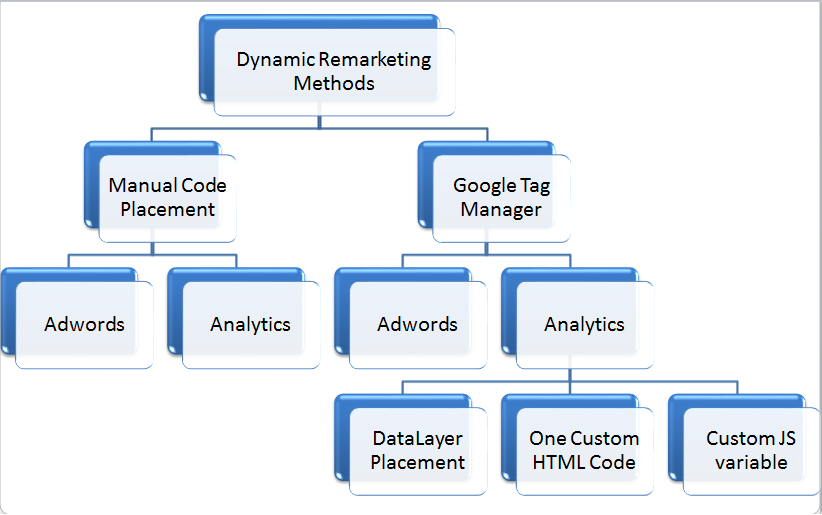The Advantages of Using "Remarketing" In Google Analytics
The Advantages of Using "Remarketing" In Google Analytics
Blog Article
Optimize Your ROI With Remarketing in Google Analytics
By taking advantage of the power of individual information and customizing advertisements to specific target market sectors, businesses can substantially amplify their conversion rates. The trip to taking full advantage of ROI with remarketing is a nuanced path paved with understandings and possibilities that can improve the trajectory of your advertising and marketing ventures.
Understanding Remarketing in Google Analytics
Understanding remarketing in Google Analytics is vital for enhancing your electronic advertising and marketing technique. Remarketing permits you to target individuals that have actually previously seen your internet site or engaged with your application, offering them with tailored advertisements as they browse other sites or make use of other applications within the Google Display Network. This strategy aids keep your brand top of mind and motivates users to return to your site, inevitably increasing the possibility of conversion.
By using Google Analytics, you can track the performance of your remarketing campaigns, acquiring important understandings right into user actions, involvement, and conversions. This data allows you to refine your targeting, messaging, and bidding strategies to boost the overall effectiveness of your projects.
In addition, comprehending the various kinds of remarketing listings readily available in Google Analytics, such as basic, dynamic, and similar target markets, permits you to create very segmented and individualized campaigns customized to details customer sections. This degree of granularity can substantially enhance the importance and influence of your remarketing initiatives, inevitably maximizing your roi.
Establishing Up Remarketing Lists
To successfully implement remarketing projects in Google Analytics, the first step includes developing and setting up remarketing lists targeting particular individual sectors based upon their communications with your website or application. By establishing remarketing checklists, you can tailor your advertising initiatives to get to customers who have actually already shown passion in your services or items.
To begin, browse to the Admin section of your Google Analytics account and pick the Property where you wish to create the remarketing listing. Then, under the Building column, click on 'Target market Definitions' and choose 'Target markets.' Next off, click on the red 'New Target market' switch and choose 'Develop New' to define the specifications for your remarketing checklist.

Crafting Reliable Remarketing Advertisements

When crafting your advertisements, emphasis on developing attention-grabbing headlines and compelling visuals that stand apart to possible customers. Include strong calls-to-action that urge individuals to revisit your site and finish a wanted activity. Make use of dynamic remarketing to show personalized advertisements including items or solutions that customers have previously checked out on your website.
Additionally, make certain that your ads are mobile-friendly considering that a considerable portion of net web traffic comes from mobile tools. Test different advertisement variants to identify which designs and messages drive the very best outcomes. By continuously refining and enhancing your remarketing advertisements based upon efficiency information, you can maximize their efficiency and improve your return on financial investment.
Analyzing Remarketing Efficiency

With Google Analytics, marketers can track the efficiency of their remarketing projects in real-time, permitting them to determine patterns, patterns, and areas for improvement quickly. By examining the data, marketers can establish which ads are executing well, which audience segments are reacting favorably, and which networks are driving one of the most conversions. This level of granularity makes it possible for marketing professionals to make data-driven choices to maximize their remarketing advocate better outcomes.
Optimizing ROI With Remarketing
Evaluating remarketing data in Google Analytics enables marketers to identify possibilities for optimizing return on investment (ROI) via strategic adjustments - What Is “Remarketing” In Google Analytics?. To make the most of ROI with remarketing, it is important to recognize the actions of your audience. By evaluating individual communications, such as the web pages they saw, the products they saw, or the actions they handled your website, you can customize your remarketing campaigns much more efficiently
Segmenting your target market based upon their actions allows you to create personalized and targeted ads that are most likely to reverberate with them. By revealing appropriate advertisements to details More Info segments of your audience, you can increase the possibilities of conversion and ultimately enhance your ROI.
In addition, examining various ad creatives, messaging, and offers can help determine what reverberates finest with your target market. A/B screening allows find here you to explore different aspects of your ads to establish what drives the highest possible interaction and conversion rates.
Verdict
To conclude, optimizing ROI with remarketing in Google Analytics calls for a calculated method to analyzing customer actions, segmenting audiences, developing tailored advertisements, and optimizing project performance. By leveraging data-driven insights and examining different methods, businesses can boost their remarketing efforts to drive higher engagement and conversion rates. This organized method makes certain that resources are successfully assigned in the direction of making best use of returns on financial investment in remarketing campaigns.
Next off, click on the red 'New Audience' switch and visit this site right here pick 'Develop New' to define the criteria for your remarketing list.
By constantly refining and maximizing your remarketing ads based on efficiency data, you can maximize their performance and improve your return on financial investment.
By diving into these insights, marketers can obtain an extensive understanding of how their remarketing initiatives are reverberating with their target audience and driving conversions. To optimize ROI with remarketing, it is crucial to understand the habits of your target market.In conclusion, optimizing ROI with remarketing in Google Analytics requires a tactical technique to evaluating user habits, segmenting target markets, producing customized advertisements, and enhancing project performance.
Report this page